
ORCON F
All-round adhesive sealant for interior and exterior use
Item number: 10106 | GTIN: 4026639016270
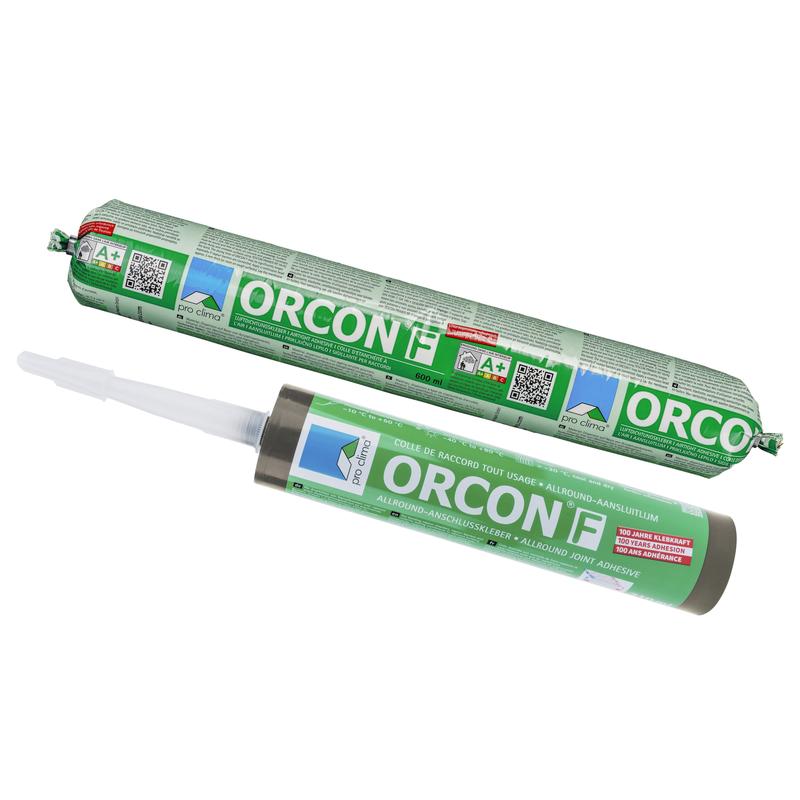
Advantages
- Reliable adhesion even during frosty conditions: can be worked with above –10 °C
- Particularly durable: adhesion for 100 years, independently tested and confirmed
- Ensures firm and permanently elastic adhesion
- Ensures reliable joints: penetrates deep into the subsurface, remains elastic
- Test winner in April 2012 with the German product-testing foundation ‘Stiftung Warentest’
- Construction in adherence with standards: for airtight sealing in accordance with DIN 4108-7, SIA 180 and RE 2020
- Can be stored down to –20 °C. Material does not freeze in the tube
- Excellent values in hazardous substance test, has been tested according to the ISO 16000 evaluation scheme
Areas of application
- Creation of airtight seals for vapour control and airtight membranes of all kinds, including all pro clima vapour control membranes and airtight membranes (e.g. INTELLO, INTELLO X, DB+, DASATOP and DA).
- Creation of windtight seals for roofing underlay membranes of all kinds (PP, PET). Sealed joints with the SOLITEX MENTO series, SOLITEX QUANTHO, SOLITEX ADHERO or SOLITEX UM connect, for example, meet the requirements specified by the German ZVDH product data sheets.
- Creation of windtight seals for breather membranes (e.g. SOLITEX FRONTA series).
- Sealing overlaps and joints for trickle protection membranes.
| Coverage | |||
|---|---|---|---|
| Delivery form | Content | Bead width | Coverage |
| Cartridge | 310 ml | 5 mm | ~15 m |
| 8 mm | ~6 m | ||
| Foil tube | 600 ml | 5 mm | ~30 m |
| 8 mm | ~12 m |
Installation steps

1. Preparation
Subsurfaces must have sufficient stability and be dry, level and free of dust, silicone and grease. Brush off subsurfaces; if necessary, clean with a vacuum cleaner and wipe down.
If necessary, apply a coat of TESCON PRIMER in the case of crumbling plaster or very fine dust. This can lead to a significant increase in the drying time.
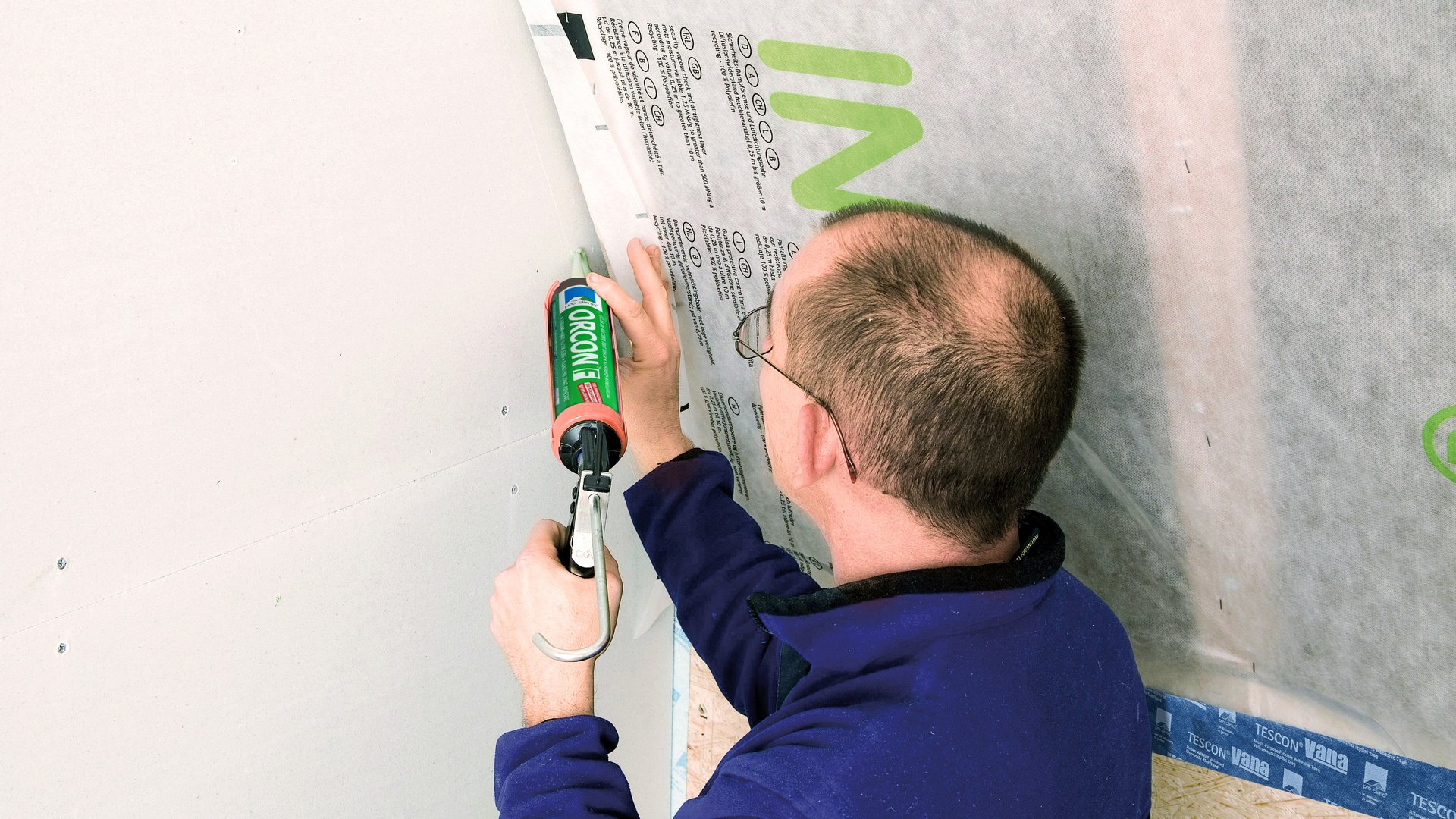
2. Sealing to a plastered gable wall
Apply a line of adhesive that is at least 5 mm thick (more in the case of rough subsurfaces, if necessary).
Apply the membrane, leaving slack to allow for expansion.
Do not press the adhesive completely flat so as to allow for relative motion between components.
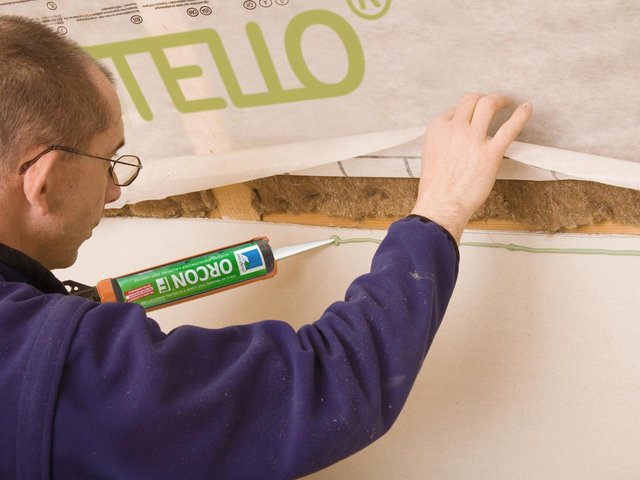
3. Sealing to plastered knee walls
Sticking procedure is the same as for a gable wall. Provide slack to allow for expansion. Do not press the adhesive completely flat.
In general, pressure laths are not required on stable subsurfaces.
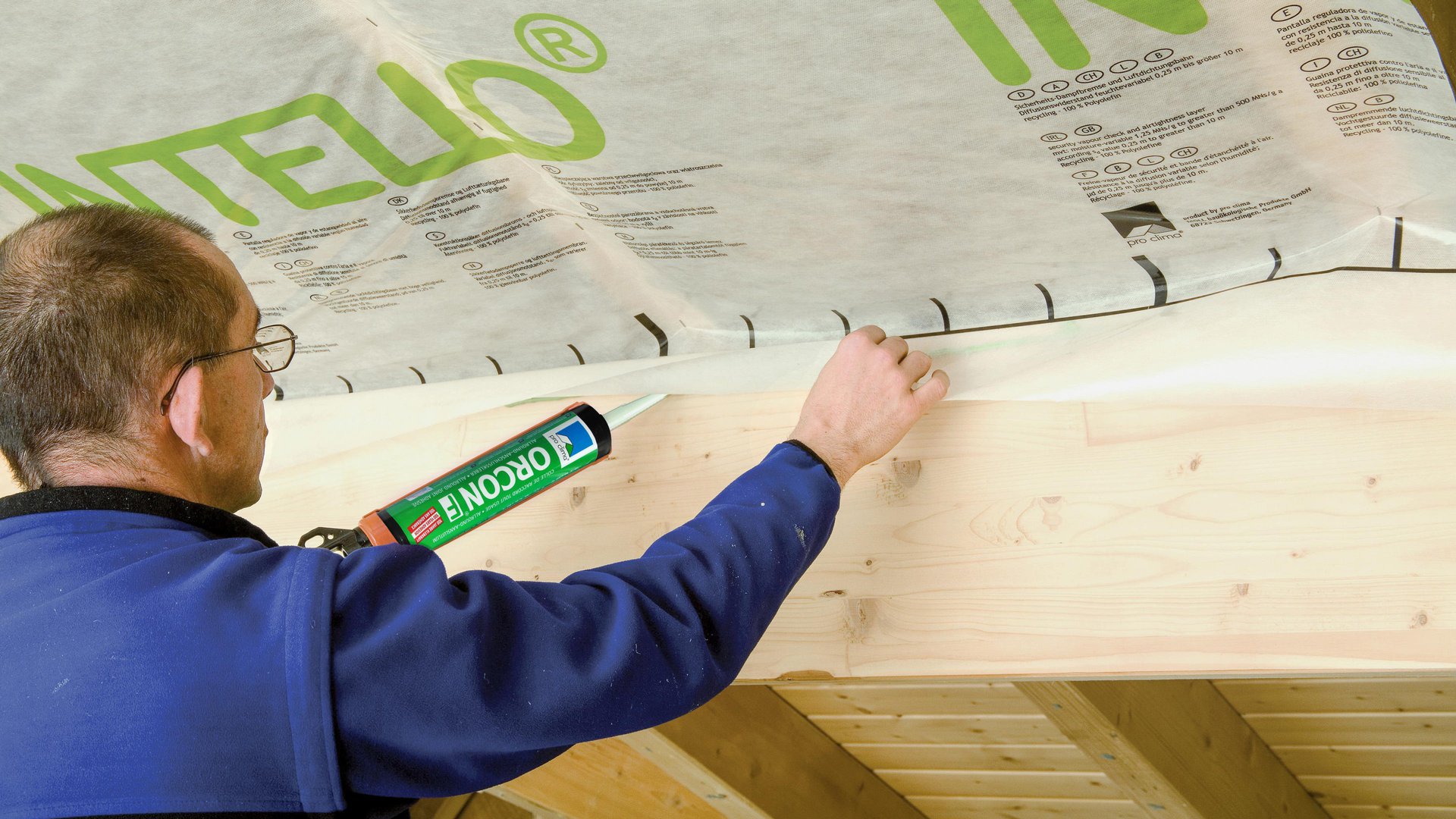
4. Sealing to wood
For sealing to roughly sawn rafters or purlins, apply a line of ORCON F that is at least 5 mm thick (more in the case of rough subsurfaces, if necessary).
Where possible, provide slack to allow for expansion. Do not press the adhesive completely flat.
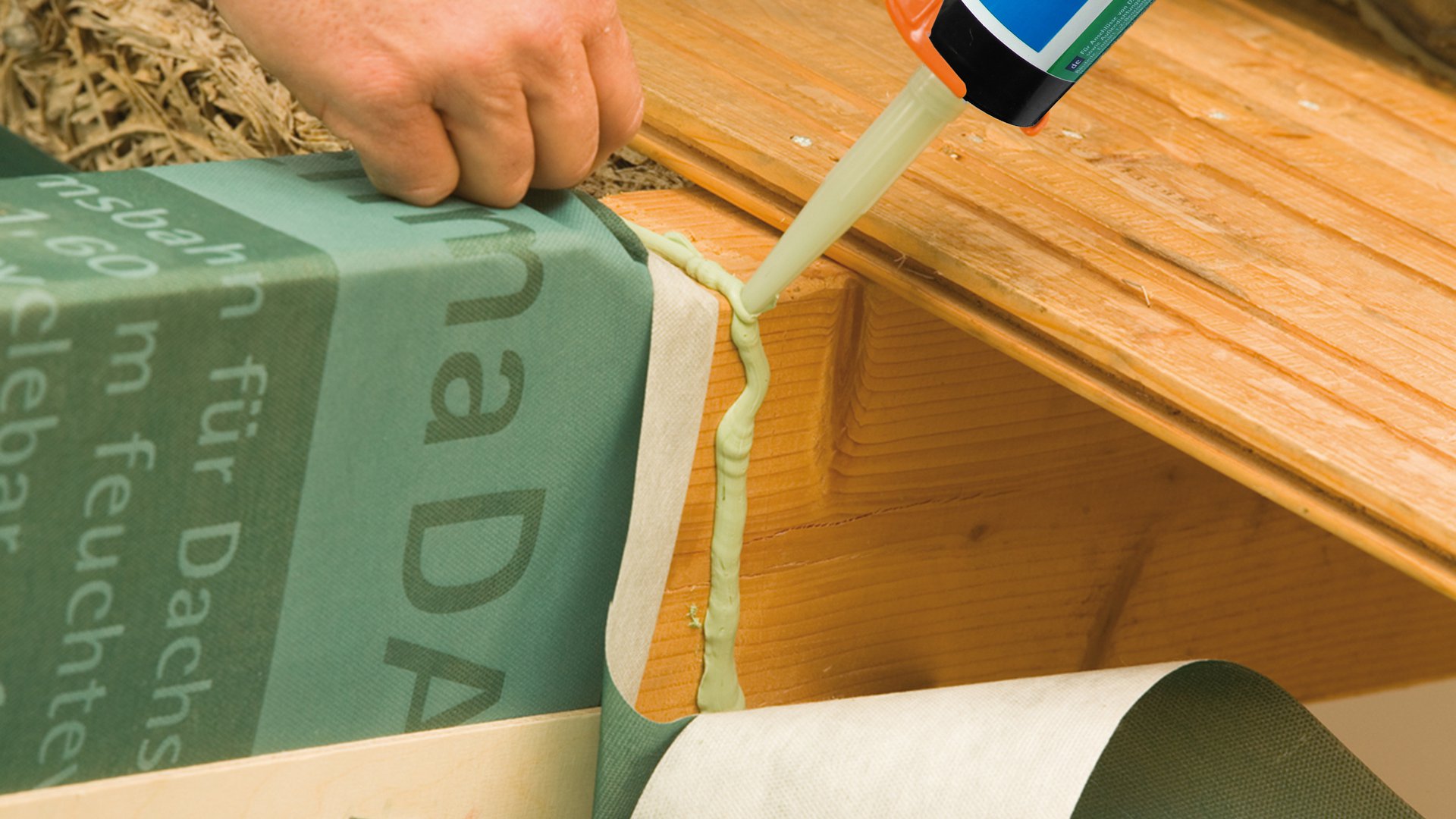
5. Sealing of sub-and-top membrane strips
Bond refurbishment vapour control membranes (e.g. DASATOP) to rough or mineral subsurfaces using a line of adhesive that is approx. 5 mm thick (or thicker, if necessary); allow slack for expansion where possible. Do not press the adhesive completely flat. Carefully guide the membrane strip into the corners.
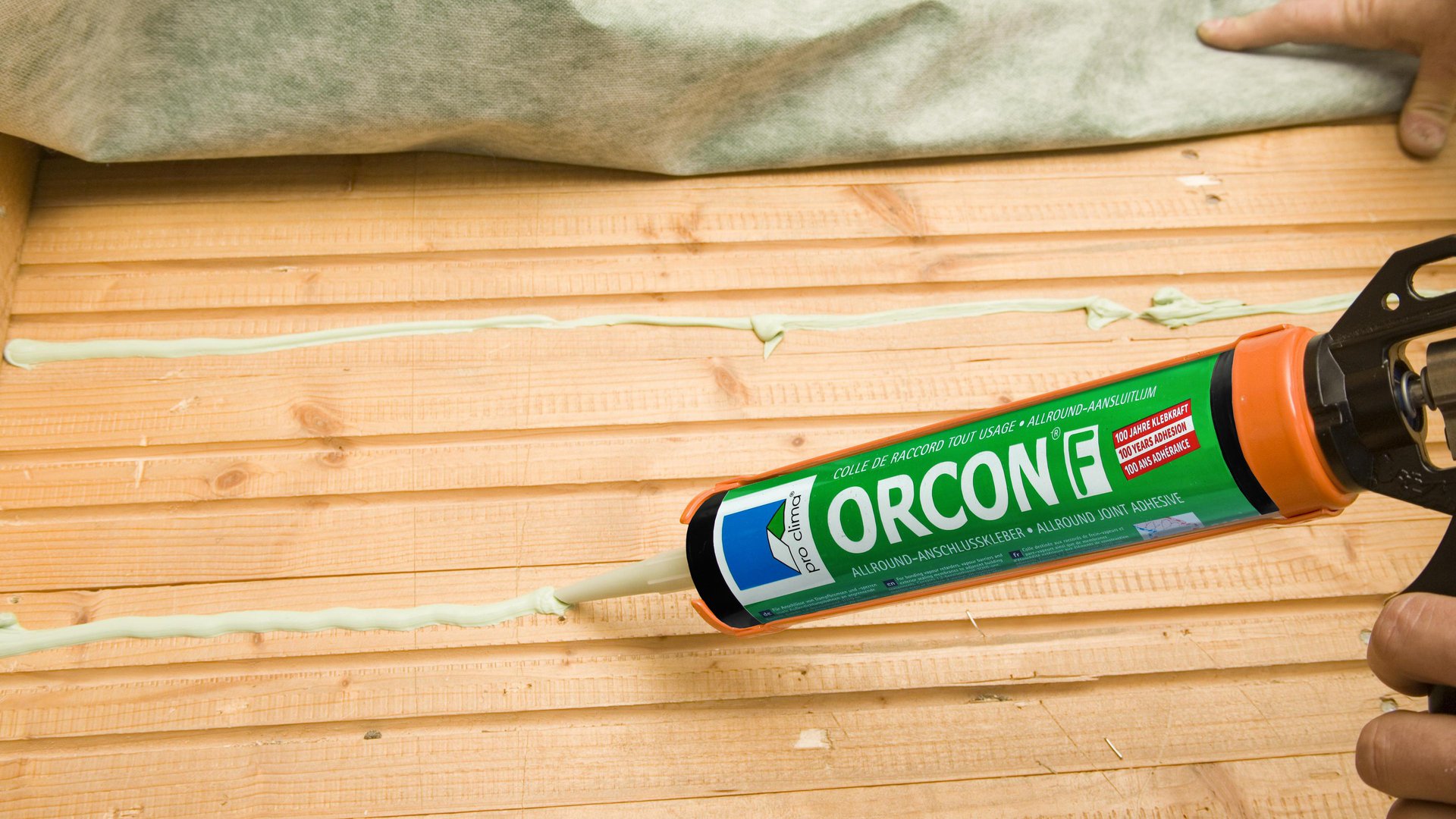
6. Sealing of exterior air sealing
In the case of external roof insulation with continuous rafters, bond the vapour control membrane (e.g. pro clima DA) to two wooden boards in the area above the purlin using two parallel lines of ORCON F. Also bond the two boards using two lines of adhesive on the rafter.
Subsurfaces
Clean subsurfaces before applying adhesive. Mineral surfaces (plaster or concrete) may be slightly moist. Adhesion is not possible on frozen surfaces. There must be no water-repellent substances (e.g. grease or silicone) on surfaces to be sealed. Subsurfaces must have sufficient stability – if necessary, a mechanical support (pressure lath) must be used (e.g. on crumbling subsurfaces).
Permanent adhesion is achieved on all pro clima interior and exterior membranes, on other vapour control and airtight membranes (e.g. those made of PE, PA, PP and aluminium) and on other underlay and breather membranes (e.g. those made of PP or PET). Seals can be created on mineral subsurfaces (e.g. plaster or concrete), roughly sawn or planed wood, and hard wood-based panels (chipboard, OSB, plywood, MDF panels).
The best results in terms of achieving a well-protected structure are achieved on high-quality subsurfaces. It is your responsibility to check the suitability of the subsurface; adhesion tests may be necessary in certain cases.
General conditions
The adhesive joints created must not be subjected to tensile forces.
The product achieves its final level of strength only when it has dried. This should be taken into account if airtightness measurements are to be carried out or if blown-in insulation material is to be installed directly after application of this adhesive. It may be advisable to implement protective measures such as mechanical reinforcements in the case of subsurfaces that have insufficient stability.
Ventilate continuously and systematically to prevent build-up of excessive humidity; use a dryer if necessary.
| Components |
|
Sealant Dispersion based on acrylic acid copolymers and ethanol. Free from plasticisers, halogens |
|
Cartridge PCR (recycled) |
| Properties |
|
Colour Green |
|
Bond durability, non-aged/aged Passed |
|
Elasticity High elasticity |
|
Application temperature -10 °C to +50 °C |
|
Temperature resistance Permanent -40 °C to +80 °C |
|
Storage Down to -20 °C, cool and dry |
|
Passive House Certification phA |